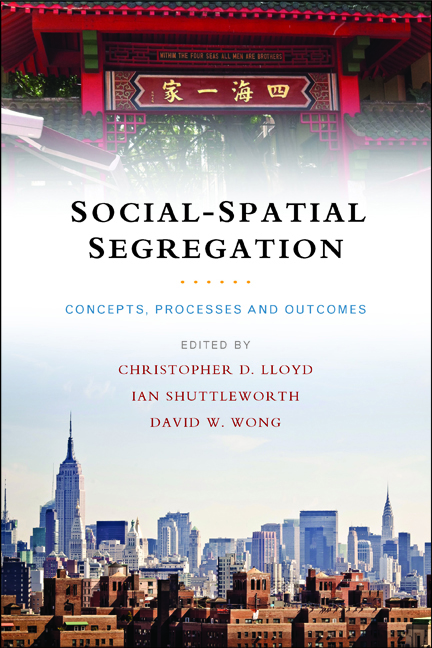fourteen - ‘Religious’ concentration and health outcomes in Northern Ireland
Published online by Cambridge University Press: 04 March 2022
Summary
Introduction
After over 30 years of intense sectarian-related violence and sustained tensions between Catholics and Protestants, Northern Ireland can, in some senses, be described as a ‘post-conflict’ society. The more peaceful political context of recent years has altered the perceptions and lived realities of many residents of Northern Ireland, and has developed alongside changes in the socioeconomic environment; violence and other expressions of sectarian conflict have greatly reduced, and cities such as Belfast have seen a dramatic rise in levels of economic investment and development. Residential segregation is decreasing, and there is evidence of changing attitudes towards living in communities of a mixed residential composition and increasing tolerance between groups (Catney, 2008).
However, ‘religious’ population clustering remains marked; Shuttleworth and Lloyd's (2009a) study, making use of the Northern Ireland Census-based grid square resource, found that, in 2001, some 66 per cent of Protestants lived in areas that were 75 per cent or more Protestant, while 59 per cent of Catholics lived in areas that were 75 per cent or more Catholic. Evidence for the distinct geography of residential concentration in Northern Ireland dates as far back as the 17th century (see, for example, Jones, 1960; Boal, 1996; Hepburn, 1996; Bardon, 2005), but the recent period which saw the most significant changes to the intensity of residential segregation began in the late 1960s, at the onset of a sustained and widespread period of civil disturbances and violence, known colloquially as ‘The Troubles’. The mass population movements of people which took place during this time, when there was considerable migration of individuals and households, either by choice or by force, to areas where they were in a ‘religious’ majority, are well-known for their role in increasing residential segregation across Northern Ireland (Compton and Power, 1986; Darby, 1986; Cormack and Osborne, 1994; Compton, 1995; Doherty and Poole, 1997, 2000). The amplified potential for violence at the interfaces during this time led to the erection of peace walls (Shirlow and Murtagh, 2006). While this period of extreme conflict and violence has now largely subsided, many residents of Northern Ireland are still living in areas dominated by their ‘own’ religious group.
- Type
- Chapter
- Information
- Social-Spatial SegregationConcepts, Processes and Outcomes, pp. 335 - 362Publisher: Bristol University PressPrint publication year: 2014



